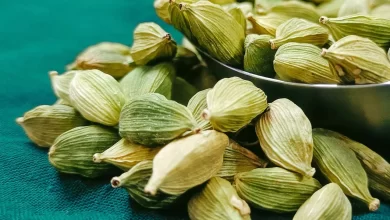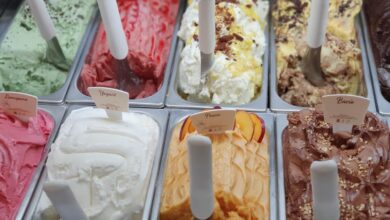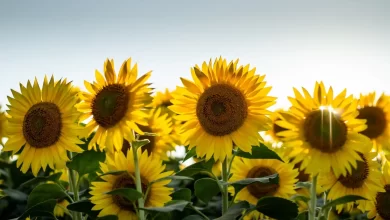Tea is a popular beverage that has been enjoyed for thousands of years. It is made from the leaves of the Camellia sinensis plant, which is native to Asia but is now grown in many parts of the world. There are different varieties of tea, including black, green, white, and oolong, and each has its unique flavour and aroma. Tea is enjoyed by people of all ages and cultures and is often associated with relaxation, socializing, and wellness. Tea is a versatile beverage that can be enjoyed in many ways. It can be served hot or cold, with or without sweeteners, and can be flavoured with a variety of herbs and spices. It’s a boon for our modern society. So let’s find out some of the most amazing facts about tea.
- The term “tea” is used to refer to the leaves of the Camellia sinensis plant, but herbal infusions made from other plants are technically not teas but tisanes.
- Tea is the second most consumed beverage in the world after water. The third spot takes the beer.
- Tea has been enjoyed for over 5,000 years, with its origins in China.
- Tea comes from the Camellia sinensis plant, but the different varieties of tea (black, green, white, oolong) are produced by varying the processing and oxidation of the leaves.
- The first record of tea being consumed in the Western world dates back to the 16th century when Portuguese priests and merchants brought tea back from Asia.
- In the 18th century, the British introduced the concept of “afternoon tea,” which quickly became a popular social event.
- Tea contains caffeine, which can help to improve focus and alertness, but it also contains theanine, an amino acid that can have a calming effect.
- The most expensive tea in the world is called Da Hong Pao and is grown in the Wuyi Mountains in China. A single ounce of this tea can sell for hundreds of dollars.
- The practice of adding milk to tea was started in the 18th century by the British, who believed it helped to reduce the bitterness of the tea.
- The annual International Tea Day is celebrated on December 15th to raise awareness about the health benefits and cultural significance of tea.
- Tea contains natural compounds called polyphenols, which are powerful antioxidants that can help to protect the body against oxidative stress and inflammation.
- Green tea, in particular, has been associated with weight loss and may help to improve metabolism and burn fat. Green tea contains caffeine as well as catechin, a type of flavonoid that acts as an antioxidant. According to research, both of these compounds can increase the rate of metabolism. Catechin can aid in the breakdown of excess fat, and both catechin and caffeine can increase the amount of energy used by the body.
- India is the world’s largest tea producer, followed by China, Kenya, and Sri Lanka.
- The tea industry employs millions of people around the world, and in some countries, such as India and Sri Lanka, tea is a major source of income.
- Tea contains a range of beneficial compounds, including flavonoids, catechins, and theanine, which have been linked to various health benefits, such as reduced risk of heart disease and cancer.
- Tea has been used in traditional medicine for centuries and is believed to have a range of health benefits, including improving digestion, boosting immunity, and reducing stress.
- Tea has played an important role in many cultures and has been the inspiration for countless works of art, literature, and music.
- The world’s largest tea farm, located in Assam, India, covers an area of more than 1,200 hectares and produces around 10% of India’s tea.
- The world’s oldest known tea, discovered in the tomb of a Chinese emperor, dates back to the 2nd century BCE.
- Matcha, a type of green tea that has been ground into a fine powder, is often used in traditional Japanese tea ceremonies.
- The United States is the only country in the world where iced tea is more popular than hot tea.
- Tea bags were invented by accident in 1908 by Thomas Sullivan, a tea merchant in New York City. He sent out samples of loose tea leaves to his customers in small silk bags, which they mistook for a new way to brew tea.
- The tea industry has its own language for grading tea. In general, the higher the grade, the more expensive and higher quality the tea is.
- Some types of tea, such as white and green tea, are believed to have more antioxidants than many fruits and vegetables.
- The caffeine content in tea varies depending on the type of tea and how it is brewed. On average, a cup of tea contains about half the amount of caffeine as a cup of coffee.
- Many cultures have their own traditional tea ceremonies, which can involve elaborate rituals and etiquette.
- In the UK, “builder’s tea” is a popular term for strong black tea with milk and sugar, often enjoyed by manual labourers.
- In China, the traditional way of brewing tea involves a small clay teapot, a tea tray, and several cups. The tea is brewed several times, with each infusion having a slightly different flavour.
- The world’s largest tea party was held in Sri Lanka in 2016 and involved 32,682 participants.
- Tea can be used for more than just drinking. Tea can be used as a natural dye, a furniture polish, and even a plant fertilizer.
- The most expensive tea cup in the world is the “Empress Dowager” cup, made from a rare porcelain glaze and sold at auction for over $36 million.
- Tasseography is the study of learning the patterns of tea leaves.
- Around 100g of tea contains about 11mg of caffeine.
- 1kg of refined tea can make 500 small 250ml cups of tea.
- The top 3 countries according to the most consumption of this plant is china, with 15.292 million litres. India comes in the 2nd spot with 6.279 million litres of consumption, and 3rd is Russia with 5.63 million litres.
- There are over 3000 different types of tea, each with its own distinct characteristics.
- Darjeeling is known as the “champagne of teas” because of its delicate aromas of muscatel and ripe fruits, as well as its amber colour.
Nutrition Facts of Tea
Here are the nutrition facts for about one cup of tea with milk and sugar.
- Energy: 125kj
- Protein:0.93 grams
- Carbs: 4.97 grams
- Sugar: 4.84 grams
- Fat: 0.82g grams
- Cholesterol: 3mg
- Fibre:0.1 grams
- Sodium: 14 grams
- Potassium: 2 grams






